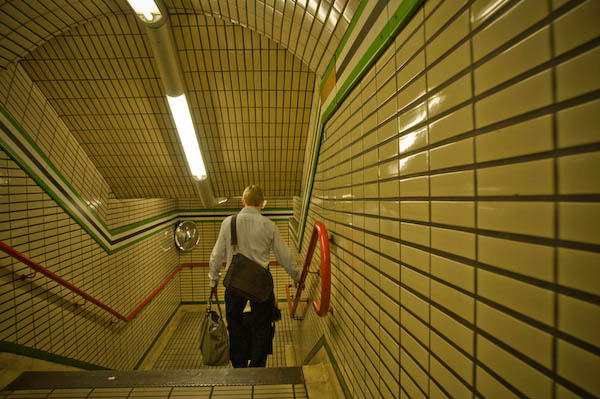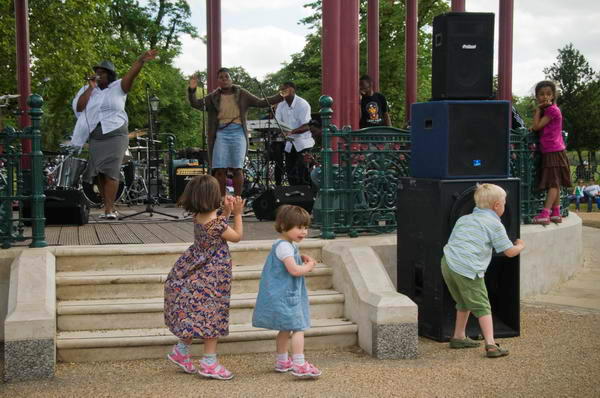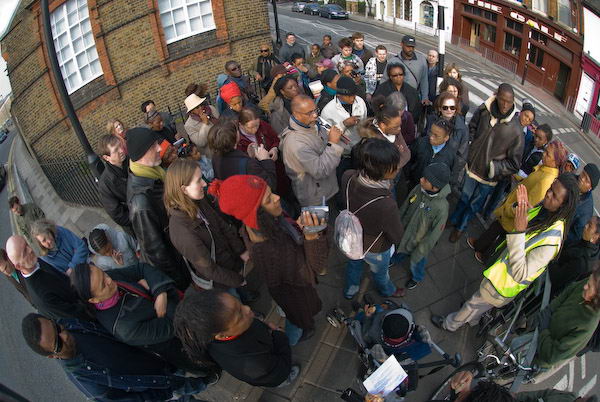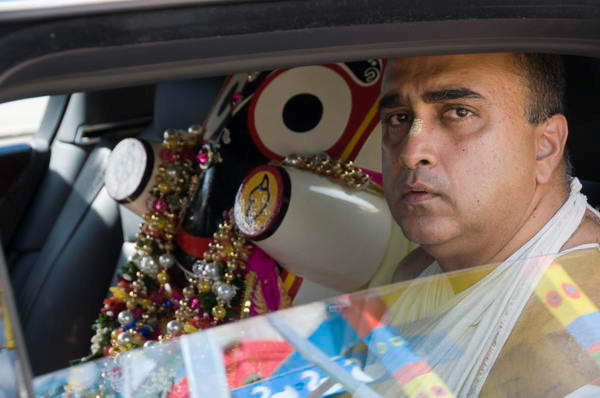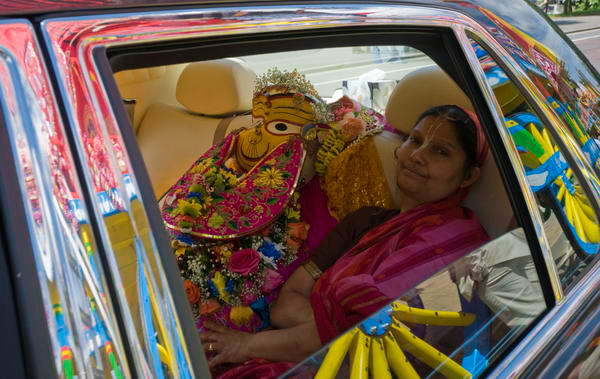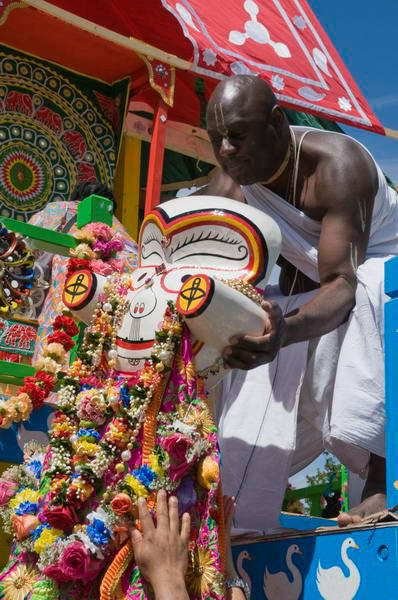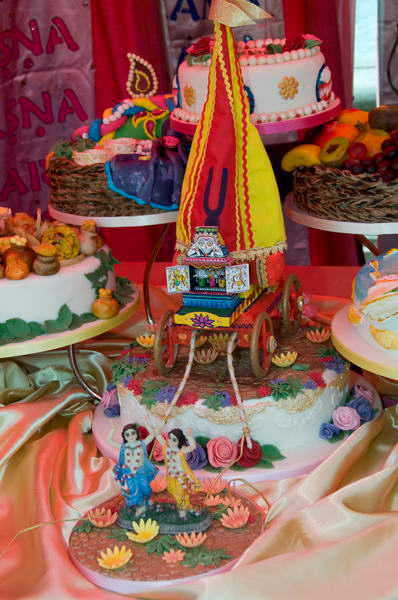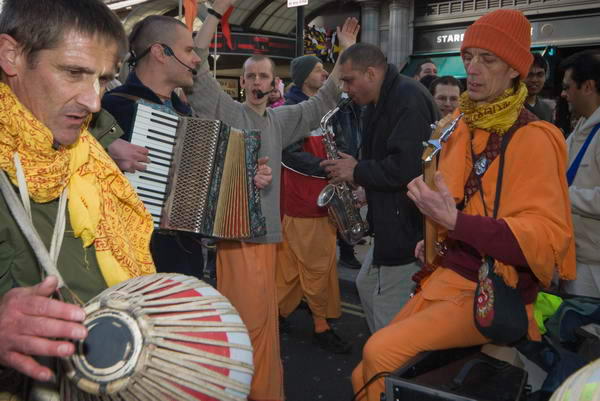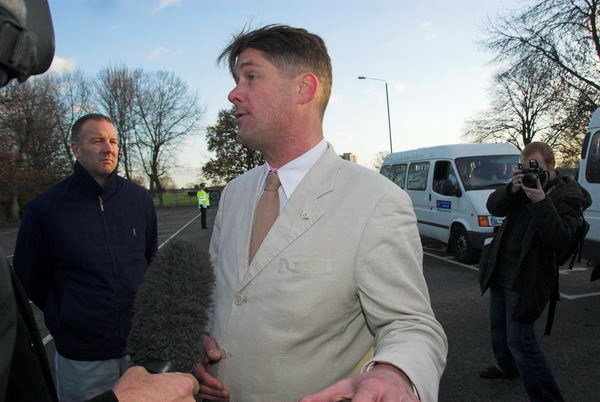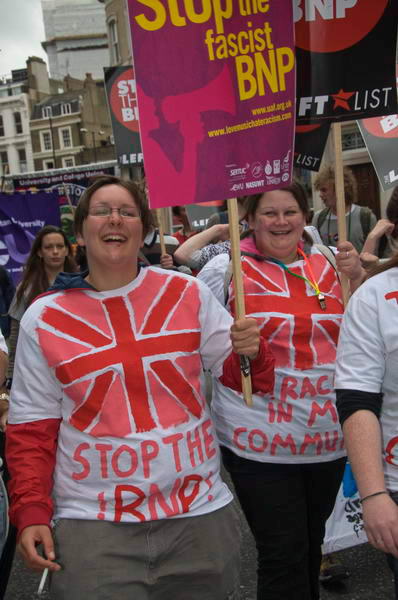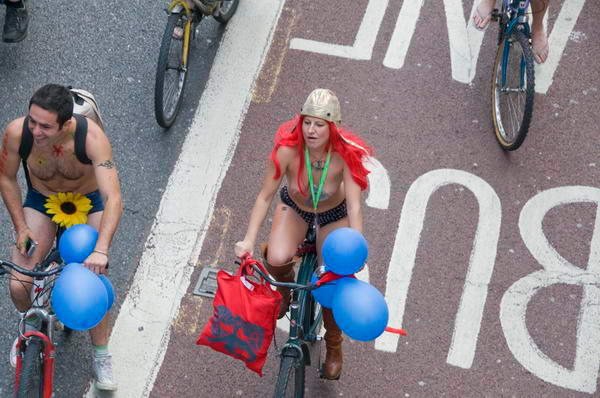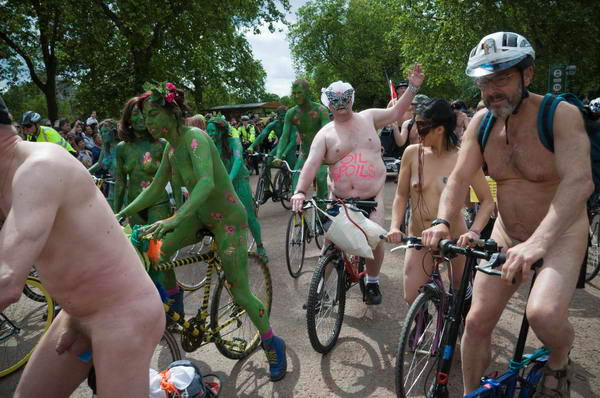‘A LOOKING GLASS EYE’, 21st Century London‘ (which continues until 12 Sept, 2008) is the first show I’ve been to at the ‘Exit Gallery‘, the stairs up out of London’s best photographic bookshop, Claire de Rouen Books, on the first floor at 121-5 Charing Cross Road, just north of Foyles.
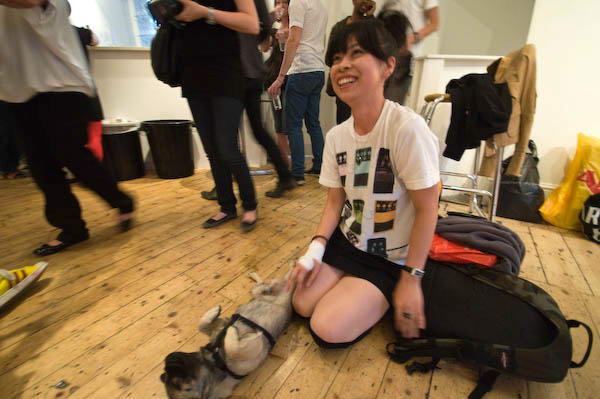
At the opening at Exit
There, around 140 unframed works of various sizes from enprint to poster (including one multiprint work) were each pinned by four bright shiny nails to around a dozen different areas on the stairs and landing in irregular grids, bereft of names or captions. At the opening party it was difficult to see the work for the press of bodies. As Brian David Stevens says on his ‘Drifting Camera‘ blog, “it was a fun party” and he has a few pictures from it there. You can see a couple which show the actual installation with some of the guests on Edmond Terakopian‘s blog – and that’s my shoulder visible in a check shirt at the bottom left of the top image, with I think Daniele Tagmani and Thabo Jaiyesimi in the centre.
There were a few copies of plans of the wall layout available, with squares and numbers on them, but even with the help of these it was confusing to march pictures to photographers, although there were a few that were instantly recognisable. It would have been rather easier to have the individual plans and lists pasted on each section of wall – our better still some rather easier and more informative system there, but things will of course be rather easier without the crush of bodies on the opening night. I’m not sure quite how many photographers have work in the show – perhaps 50 – and most of them seemed to be there and with a few friends.
Unlike the curate’s egg, this really is a show that is good in parts, and if the intention was to provide a full cross-section of work from the last 8 years on London ranging from the superb to the rather ordinary, it was successful. Print quality also seemed to cover a similar range, with work representing the best work from some of London’s leading labs on the wall together with looked like inkjet prints on cheap paper from the kind of printers that cost less than a set of inks. Some photographers seem to have decided that it wasn’t worth taking a great deal of trouble for work that was going to be nailed onto a wall – and the fact that the gallery showed several pictures partly obscured by electrical conduit or similar wall-clutter suggests a certain contempt on their side.
Of course there are different approaches to the medium. Not every black and white needs the Ansel Adams treatment, and I’ve been to shows I’ve loved where the prints were made on a photocopier. But there needs to be some kind of match between the intentions of the work and the syntax of the printing process. Otherwise even good prints can be bad prints and bad prints are best reserved for the rubbish bin, not the gallery wall.
But there is plenty of work here to interest most viewers (although the photographer I arrived with left very quickly) and not just from the biggest names, although several of the half-dozen pictures by Simon Wheatley were among those that appealed to me most (though work by some other photographers I admire was disappointing.) Among the highlights for me were Brian David Stevens, who I mentioned before, and wrote about for his work that stood out in Press Photography 2008 with several fine black and white prints, and David Boulogne had some of the more interesting details from suburbia (some of which at least are from his Henorama project) which I perhaps like because they remind me very much of some of my own work with similar subject matter in the 1970s and 80s.
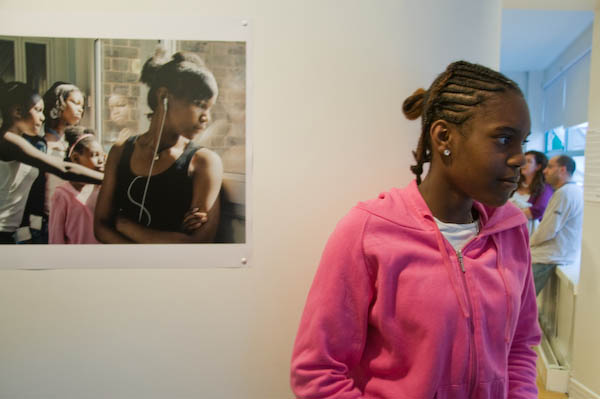
At Simon Rowe’s Photofusion opening – the picture at left was in the Exit show
Another photographer I’ve mentioned before is Simon Rowe, and the work here included some of that shown at Photofusion earlier this year.
But this is a show with a wide range of work, and others will doubtless find other work that attracts their interest. If you are in London it’s worth a visit, but give yourself plenty of time, as you will want to spend quite a while browsing and buying from the incredible stock of Claire de Rouen Books.
The gallery is close to Tottenham Court Road Station, and I took a couple of surprisingly upright pictures there on my way home.
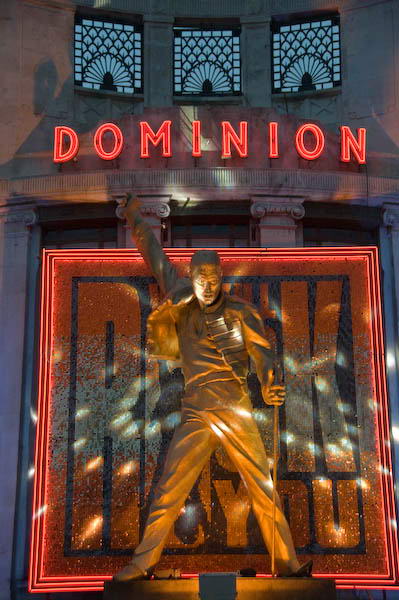
Dominion, Tottenham Court Road
